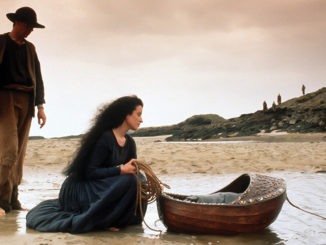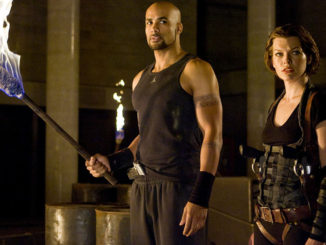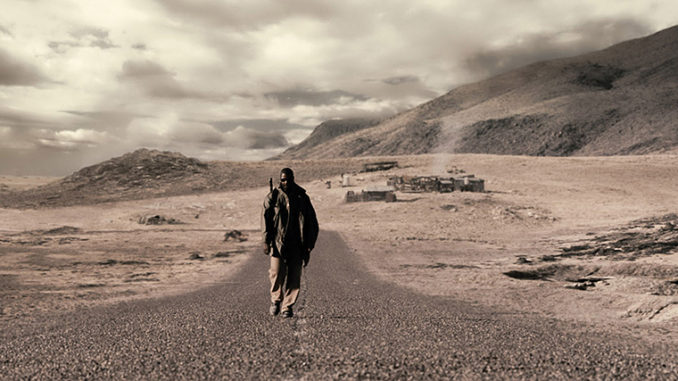
by Debra Kaufman
After tackling survival in urban America in Menace II Society, Dead Presidents and American Pimp, directing team the Hughes brothers—Albert and Allen—have turned their attention to the end of the world.
In their latest, The Book of Eli, due mid-January from Warner Bros., the world as we know it has ended. In this post-apocalyptic landscape, it’s everyone for himself and no-holds-barred in the struggle for survival. Eli (Denzel Washington) fights his way across America bearing a precious book that holds the secrets for the survival of mankind.
Just what does the end of the world sound like? That’s the question that faced supervising sound editors/sound designers Steven D. Williams, MPSE, and Eric Norris, MPSE, as they approached this daunting film. “When I read the script, I saw very exciting sound opportunities,” says Williams. “Everything that ends up on the screen sonically has to fit.” The audio post was done at Universal Studios Sound.
The movie was shot in the desolate desert outside Albuquerque, New Mexico. “There are a lot of wide-open spaces,” explains Norris. “It has an Old West feel to it. A lot of life was damaged and destroyed in this apocalyptic event, so we had to build that into the sound.”
Williams had the benefit of having worked with the Hughes brothers for 17 years, since Menace II Society. He notes that their last movie, From Hell—about Jack the Ripper in 1800s London—also required the creation of another kind of world. “But for The Book of Eli, surviving the environment is a big part of the story,” he says. “Water and all other resources are scarce. Our sound had to make that harsh, unfriendly world more believable.”
The directors put a big emphasis on sound, according to Williams. “They think about it before they start shooting,” he says. “Before they shoot, they let us know what the movie is about; they send us movies to listen to and talk about what they’re thinking. We also had the opportunity to go to the set and get a sense of what they were trying to achieve.”
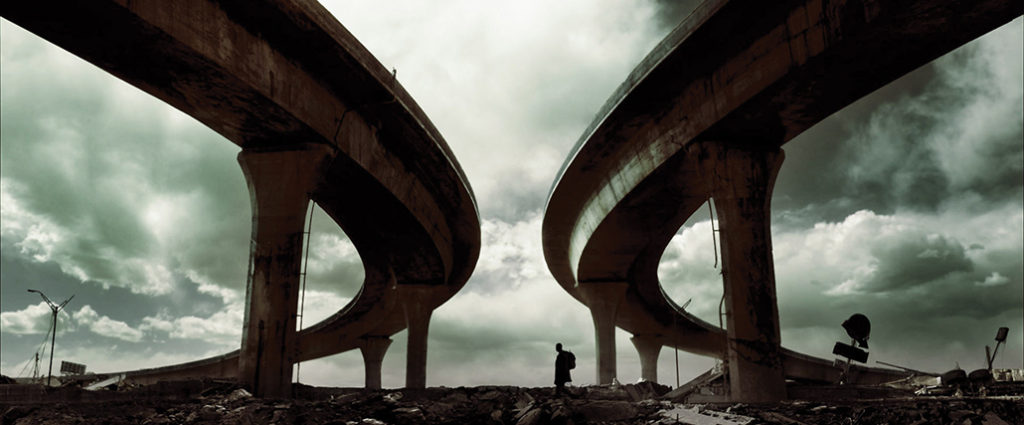
Photo courtesy of Warner Bros. Pictures
Williams and Norris also note that their efforts were supported by a strong team, including editor Cindy Mollo, A.C.E.; supervising Foley artist Gary Hecker; and re-recording mixers Chris Jenkins and Frank A. Montaño.
Though a post-apocalyptic world can be quiet, there are gun battles aplenty in The Book of Eli, and that was one of the more challenging aspects of the sound editing/design work. Norris notes that the Hughes brothers mentioned two films—director Michael Mann’s Heat in 1995 and the 2005 Australian film by John Hillcoat, The Proposition—in terms of how they wanted the guns to sound. The opening gun battle in the latter, says Norris, was quite effective. “You don’t hear the guns at all—just the impact, the ricochet and the debris,” he says. “It gave you a visceral feeling.” This was crucial to the movie, in which Eli gets directional cues for where to shoot based upon where he hears the gunshots.
The sound editors also got a good feel for what the directors wanted from the gun battles in Heat. “The brothers aren’t into big Hollywood-sounding guns,” says Norris. “They are more into realistic-sounding guns. Having said that, they wanted it nice and big, but not over-the-top.” Williams agrees. “They’re into realism,” he adds. “Michael Mann [in Heat] is known for using a lot of the production sound captured on set. It has a visceral feel for guns. We wanted to make sure we weren’t Hollywood-izing our guns.”
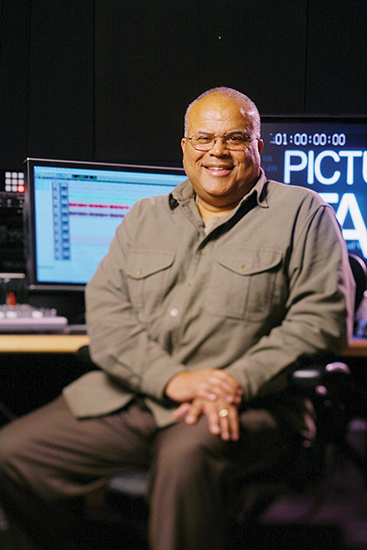
Photo by Gary Krueger
Easier said than done. One thing they learned right away was how profoundly the environment in which the guns were recorded added to the overall sound. It turns out that most firing ranges are located in canyons, giving a distinctive sound that didn’t match the film’s location. “We didn’t want the canyon tail off the guns,” explains Norris. “The big battle happens at a house in the middle of a desert with wide open spaces.” The team ended up bringing on re-recording mixer John Fasal, who is well known for his wealth of knowledge, for location recording.
They spent several trips doing test shoots, bringing the sounds back to Norris’ cutting room and comparing them to get exactly what they wanted. “Finding the ideal location is a science project,” says Williams. “You have to go out there physically and once you get there, you have to really spend time going into different areas in that location. You have to do that before you bring the whole team out there.” The two winning locations ended up being the Burbank Police firing range and the Ojai Valley Gun Club.
Norris says that to create the battle, they went through the movie frame-by-frame deciding which speaker the bullet would come out of, what direction it would go and where it would have its impact. “You feel like you’re with Eli,” he says. “Why he shoots the way he does will make sense because of the gunshot sounds.”
Finding the right place to fire the guns was only half of the battle. “There were a lot of weapons in the movie,” explains Williams, who says armorist Larry Zanoff and his company Independent Studio Services worked closely with the sound editors. Some of the weapons were exotic, including a Gatling Gun that has a pivotal role in one of the crucial scenes. “We got to see the big shoot-out, which was shot over three weeks, and see how that gun fit into the movie,” Williams says. “The show gave us a lot of opportunity to go out and capture new sounds, and the Gatling Gun was one of them.”
Motorcycles were another important sound for the team to create. Early on in the movie, Eli runs into a biker gang. “In the script, it’s very obvious that the sound of the bikes enable him to identify them later on in the film,” says Norris. “We needed to come up with a way of making these bikes sound unique.” Together, they tossed around several ideas on how to make the Harley-Davidson motorcycles sound distinctive. “The first idea was to take the spark plug out of one of the cylinders,” says Norris. “But it had absolutely no effect.”
Through Fasal, Williams and Norris were introduced to Randy Benjamin and his Picture Vehicle Rentals. “He probably has more Harleys in his backyard than anybody,” says Norris. “It must have been 100 different varieties.” With Benjamin, they listened to many different vintages and engine capacities and chose three different motorcycles.

Even then, the sound of the bikes wasn’t distinctive enough. They picked older bikes with point, rather than automatic, ignition. “We took the kick-start bikes to the desert and fiddled with the timing to make them run rough,” explains Norris. “However, once you fiddle with the timing, you can’t start it. What we had to do was leave the cover off the points, start the bikes and then retard the timing as far as we could. To Randy’s credit, he could keep the bike running and then drive it off, coughing and missing, giving the unique character we were looking for.” The final designed element was composed of many layers, including a scraping sound along with the motorcycles that were field-recorded.
But it wasn’t just loud sounds that were challenging in The Book of Eli. “There’s a lot of dynamic range,” explains Williams. “There are many very quiet moments in this movie, and our biggest task was to create the right air in the environment around the dialogue. The quiet moments are very important. When something does happen, it has a lot of impact. There are a lot of peaks and valleys.”
Creating the right kind of quiet was also a challenge. “You’re really exposed in terms of the dialogue and production track,” says Williams. “Every sound in there must serve its purpose.” The first reel of the film contains fewer than ten words, notes Norris. “It’s one of my favorite moments. You’re establishing Eli’s world. He walks into an abandoned house and kicks the cans––and you can hear them roll. It really helps sell that environment.” The directors appreciated the importance of sound in a scene like this. “Allen mentioned the footsteps, and that’s something you rarely hear a director comment about,” says Norris.
Foley artist Hecker also played a crucial role in these quiet scenes. “Because of the sparseness, each element that contributes to the sound plays a big role,” says Williams. “The sound effects and Foley had to blend in with each other and the music. I can’t tell you how seamless of a blend it was.”
The production was fortunate enough to have a composer—Atticus Ross—rooted in electronic, non-traditional music, according to Williams. The sound team had sketches of Ross’ score from the beginning, which they were able to work against while they were creating sound effects. The composer’s own background was unusual; he collaborated with musician Trent Reznor of Nine Inch Nails fame. “The freshness of his perspective really adds to the overall sonic quality,” says Williams. “He was very willing to work with the sound effects crew and vice versa.”
Having Ross’ music from the beginning was also an inspiration to them. “Ross uses analogue synthesizers to bend and twist sounds way far out,” Norris explains. “His music inspired us to come up with sounds in the same vein. I heard a lot of metallic elements in what he was doing, so I went into our library of different squeals and scrapes and metallic distress sounds and twisted those around myself, using reversing and reverbs to make some interesting mood sounds to blend with what I was hearing from Atticus.”
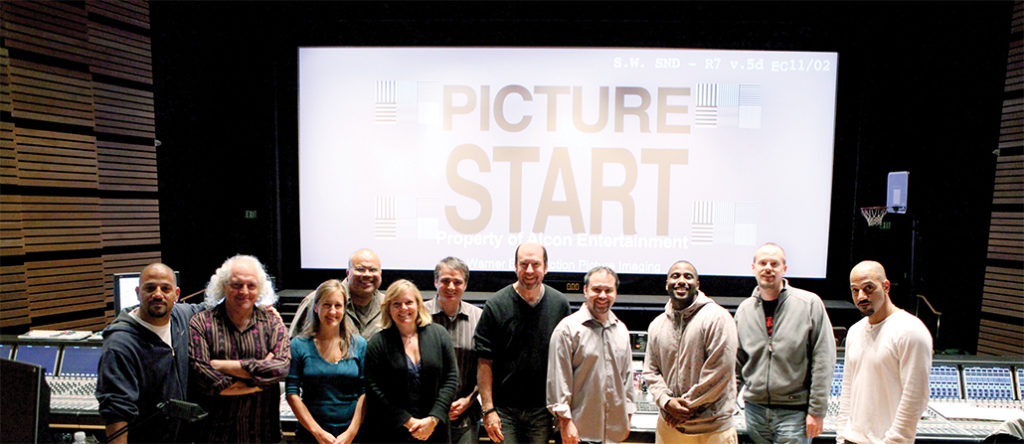
Williams also notes that, because the Hughes brothers are “very passionate about the post sound process,” they were involved in the pre-dubs. “We needed to have their input on some of the bigger sequences, especially the gun fights,” says Williams. “That way, we didn’t waste time at the final. By the time the final came, everybody was speaking the same language.”
Audiences are certain to appreciate the end results. “The directors really like to use the full aural space,” says Williams. “The film really takes advantage of surround sound, and the audience is in the middle of the environment.”
Debra Kaufman is a freelance writer who is also West Coast Editor of Film & Video Magazine and Editor of DI Studio, an online newsletter on digital intermediates. She can be reached at dkla99@verizon.net.




